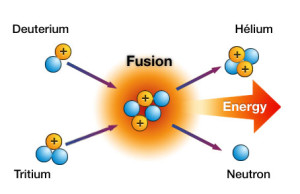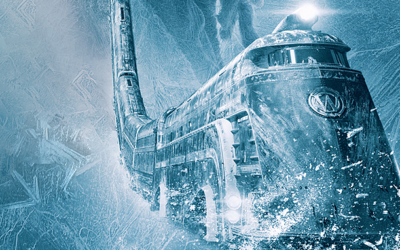Where is the Bruce Banner Hulk?
No, not the Super Bowl Coke Mini ad Bruce Banner, and no, not he post Age of Ultron Bruce Banner. The comic book version.
As we’ve mentioned previously, the Hulk has gone through some changes. Complete with a new series launch, the Hulk is now…someone else. It’s teenage supergenius Amadeus Cho driving the green machine, which, of course, hasn’t always been the case.
So where’s Banner?
The story of the Banner-to-Cho Hulk shift is happening via flashbacks, and as of issue #3 of The Totally Awesome Hulk, we’re getting a slightly clearer picture of what happened. Four months prior to the first issue of Totally Awesome Hulk (TAH from here on), Banner showed up on the Kenyan coast where an experimental fusion reactor on the Kiber Island facility was melting down. As both Iron Man and the Black Panther explained, a massive radiation spill was imminent, with 50 million people at risk. Banner realized they didn’t need “him” as much as they needed his green alter ego, who has been able to absorb radiation for…well, for a while now.
The absorption thing seemed to be going okay, but as Black Panther pointed out, the Kiber reactor was producing completely different energies than the gamma radiation that created the Hulk. End result – no boom, but the Hulk took in all the excess radiation, and was in bad shape.
In issues #2 and #3 of TAH, the Hulk’s been relocated to a containment chamber, where he’s releasing the energy, but also kind of…raging out. The energy being released (as heat) is so great that even though the Hulk’s lying in a containment shell on the bottom of the ocean, the ocean above him is boiling. The Kiber energy is reacting with the Hulk’s gamma radiation and the Hulk’s freaking out. The only plan left – as Iron Man and Black Panther see it – is transporting the Hulk to the Negative Zone, something Cho (also on site) vehemently opposes and well, in concept didn’t work out too well last time (see the World War Hulk storyline and its echoes).
Yeah – the writing’s on the wall in regards to what happens in the coming issues (check out TAH on your own at your local comics shop or Comixology), but we’re not here to speculate about the upcoming Hulk shenanigans. We’re here to talk science.
Nuclear science.
Fusion.
Let’s start nuclear science 101 for a brief rundown. You’ve got two types of nuclear reactions that are (we think) capable of producing energy on earth. First up is fission – splitting a big, fat atom’s nucleus (like Uranium-235) into smaller pieces by shooting something smaller at it. One of the coolest things about fission is that when you take all the masses of the pieces after the atom splits, it doesn’t add up to the mass of the nucleus and the subatomic “bullet” (a neutron) before the split. As long as the pieces that remain have a mass equal to or greater than that or iron, then the “missing mass” has been changed into energy, according to Einstein’s equation, E = mc2.
 For more on fission, see atomic bombs and nuclear power plants.
For more on fission, see atomic bombs and nuclear power plants.
But we’re not talking about fission today – we’re on the other side of the nuclear reaction coin: fusion.
The core idea of fusion is very simple: under tremendous heat and pressure, hydrogen (and other atoms smaller than iron) nuclei can be smashed into larger nuclei. In the sun, hydrogen nuclei are fused to form helium nuclei. Each time this reaction happens, energy is released.
For more on fusion, see…well, look at the sun. No – strike that, don’t look at the sun, but what I’m saying is that the sun is one big fusion reactor, with hydrogen nuclei smashing into each other in its core. Its core has enough pressure and temperature to make it all happen. It’s a frustratingly simple process – two things smash together to make one new thing.
For more than 60 years, we’ve been talking about the promise of fusion energy as a power source on earth. Fission, we’ve got – that’s nuclear power plants, as I said. Making fusion on earth. Well, we have…
Got that? Pack in hydrogen isotopes deuterium and hydrogen on top of an atomic bomb blast (fission), and you’ve got the environment where fusion can happen. The down side, yeah, that’s called a thermonuclear, or hydrogen bomb. It has limited fusion in its fusion/fission apocalyptic mix, but that should give you an idea of the energy release and conditions you need to produce it.
Like a lot of atomic research, fusion became a hot topic shortly after World War II, and progress has been slow. The biggest hurdle is making a reactor that produces more energy than the energy used to create the conditions in which fusion can occur. In other words – we can do it, but just in very small amounts, and only with a lot – a lot – of energy pumped in to the machine that makes it. Despite headlines – an optimistic date for seeing a working fusion reactor is still about either mid-century, or a constantly sliding, “50 years from now.”
But that doesn’t mean fusion hasn’t been making news recently. Making a mini-sun on earth takes a lot of prep work. Two major events in fusion research happened in the last few weeks, and both dealt with plasma.
Plasma is one of the four states of matter, the point you reach after gas when you keep adding heat to matter. At such high temperatures, the electrons separate from their nuclei and are free to carry an electrical charge.
Why do you need plasma for fusion? Well, the sun is plasma. Superheating gas to plasma and maintaining it is the half of making a small sun on earth, and it does produce some fusion energy, but for now – plasma is the focus of fusion research.
Once you have the plasma, it has to behave perfectly. That means it can’t come in contact with the walls of your reactor. If it does, it loses heat and fusion is no longer going to happen. Since plasma conducts electricity, it can be contained in a magnetic field, provided by supercooled, superconducting magnets.
Temperature-wise, well, that’s what the news has been about. Two reactors have been making the fusion news lately: the Wendelstein 7-X stellarator at the Max Planck Institute in Germany, and the Experimental Advanced Superconducting Tokamak (EAST) at China’s Institute of Physical Science. Both reactors are toroid (doughnuts) in design, and have their respective strengths and weaknesses (which you can read about here Tokamak and here Stellarator). EAST works with hydrogen plasma, and Wendelstein 7-X started with helium plasma, but changed to hydrogen in early February.
By the way, for the first hydrogen plasma at the Wendelstein 7-X stellarator, German Chancellor Angela Merkel herself switched the reactor on. Merkel has a PhD in physical chemistry. Of course she does.
So let’s talk temperature. The goal, according to the Wendelstein 7-X team is to hit – and maintain – a temperature of 100 million degrees Celsius.
In late January, the Wendelstein 7-X hit 80 million degrees Celsius for a quarter of a second, which was a major leap forward in fusion research. Then, just a few days later, EAST hit 49.999 million degrees Celsius and held it for 102 seconds – although to date, EAST’s results are still unverified. The EAST team is looking to reach 100 million degrees Celsius and hold it for 1,000 seconds (about 17 minutes), while the Wendelstein 7-X team is aiming to hold temperature on its plasma for 30 minutes.
Just for some reference – the surface of the sun is around 5,500°C, while the core is about 15 million degrees Celsius. Why do the reactors need to be so much hotter than the place they’re trying to imitate? The Wendelstein 7-X and EAST are starting their reactions from scratch, so they have to have a higher starting temperature that, years away and under ideal conditions, will cool a few million degrees to sustainable temperatures.
By the way – if you think the temperatures in these reactors are hot stuff, they’re nothing compared to the Large Hadron Collider, which has hit 4 trillion degrees Celsius during an experiment’s run. Very small and for a very short time, is the answer to your question of, “Why didn’t the world, starting with Switzerland, catch on fire?”
Also – if you’re wondering where the other countries are when it comes to fusion, there are 24 Tokamak experiments in a variety of different countries around the world, in various stages of development and working towards first plasma. One of the larger efforts is the International Thermonuclear Experimental Reactor (ITER) in France, which is a collaboration between the EU, the US, Russia, China, India, Japan and South Korea. If you’re a fan of multinational projects, you can guess what’s happened – ITER is wildly over budget – it’s original five billion Euro price tag in 2005 has ballooned to 21 billion in a 2014 estimate. Ideally, ITER is aiming for first plasma in the neighborhood of 2027.
While all of this insanely high temperature bodes well for fusion research moving forward, high temperature plasma is not fusion. It’s just a step on the path. Again, optimistic estimates point to somewhere around 2050 – 2060 before we have sustainable, usable fusion energy. Right now, these reactors are way too far in the negative column – they use way more energy than they produce. But the energy they produce – is about as clean as you can get. There’s no radioactive waste or harmful byproducts associated with fusion as you get with fission. And the fuel – hydrogen? The #1 most abundant element in the universe? We’ve got plenty. Loads and loads.
The only limiting factor for fusion reactors now is time. As John Jelonnek, with the Wendelstein 7-X team told The Guardian, “It’s a very clean source of power, the cleanest you could possibly wish for. We’re not doing this for us, but for our children and grandchildren.”
More fusion resources:









